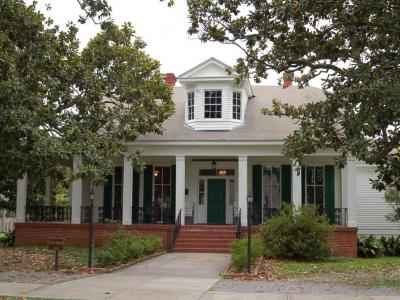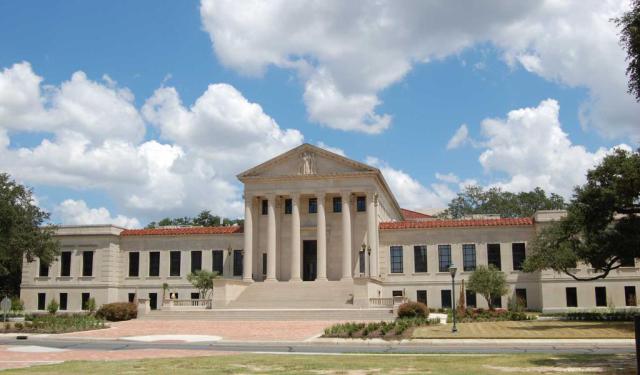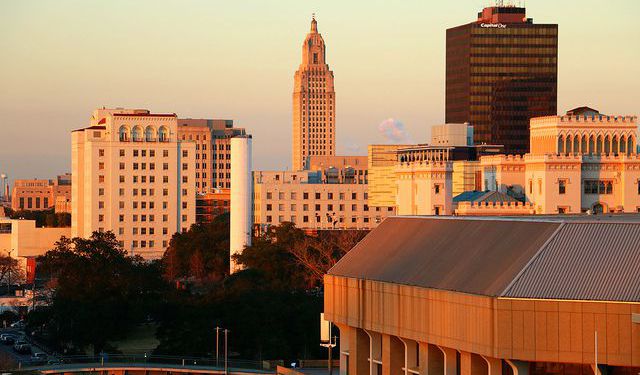Magnolia Mound Plantation House, Baton Rouge
Magnolia Mound Plantation House, nestled on a gently rising ridge near the Mississippi River, is a truly remarkable time capsule of late 18th- and early 19th-century Creole life. Originally built around 1791 by Irish émigré John Joyce as a modest four-room cottage, it stands today as the oldest documented wooden structure in the city. Lush live oaks and magnolias drape its wrap‑around gallery, showcasing the elegant French Creole vernacular architecture influenced by both French and West Indies settlers.
Between 1802 and 1805, Joyce’s widow Constance and her second husband, French war veteran Armand Duplantier, oversaw major improvements to the house. These included stylish Federal‐style interior upgrades such as a coved parlor ceiling, intricate moldings, and an expanded rear gallery to accommodate their growing family. Behind its graceful façade lies a fascinating collection of Louisiana‐made and imported furnishings-French, English, and Federal‑style pieces-that reflect the cultural and mercantile links between Baton Rouge, New Orleans, and the eastern United States.
Today, Magnolia Mound is maintained by the Baton Rouge Recreation and Park Commission (BREC) in partnership with the Friends of Magnolia Mound Plantation. Opened to the public in 1975, the site includes the main house museum, a reconstructed open‑hearth kitchen, slave quarters, pigeonnier, overseer’s house, carriage house, and kitchen garden-all set on sixteen acres. Accredited by the American Alliance of Museums, it offers guided tours, living‑history demonstrations, and educational events that ensure both the elegance and the more difficult aspects of plantation life-including the lives of the enslaved-are thoughtfully shared.
A visit to Magnolia Mound offers a captivating, immersive journey into Creole architecture, plantation-era craftsmanship, and Louisiana’s layered past, situated just a mile from downtown and moments from LSU’s southern gateway.
Between 1802 and 1805, Joyce’s widow Constance and her second husband, French war veteran Armand Duplantier, oversaw major improvements to the house. These included stylish Federal‐style interior upgrades such as a coved parlor ceiling, intricate moldings, and an expanded rear gallery to accommodate their growing family. Behind its graceful façade lies a fascinating collection of Louisiana‐made and imported furnishings-French, English, and Federal‑style pieces-that reflect the cultural and mercantile links between Baton Rouge, New Orleans, and the eastern United States.
Today, Magnolia Mound is maintained by the Baton Rouge Recreation and Park Commission (BREC) in partnership with the Friends of Magnolia Mound Plantation. Opened to the public in 1975, the site includes the main house museum, a reconstructed open‑hearth kitchen, slave quarters, pigeonnier, overseer’s house, carriage house, and kitchen garden-all set on sixteen acres. Accredited by the American Alliance of Museums, it offers guided tours, living‑history demonstrations, and educational events that ensure both the elegance and the more difficult aspects of plantation life-including the lives of the enslaved-are thoughtfully shared.
A visit to Magnolia Mound offers a captivating, immersive journey into Creole architecture, plantation-era craftsmanship, and Louisiana’s layered past, situated just a mile from downtown and moments from LSU’s southern gateway.
Want to visit this sight? Check out these Self-Guided Walking Tours in Baton Rouge. Alternatively, you can download the mobile app "GPSmyCity: Walks in 1K+ Cities" from Apple App Store or Google Play Store. The app turns your mobile device to a personal tour guide and it works offline, so no data plan is needed when traveling abroad.
Magnolia Mound Plantation House on Map
Sight Name: Magnolia Mound Plantation House
Sight Location: Baton Rouge, USA (See walking tours in Baton Rouge)
Sight Type: Attraction/Landmark
Sight Location: Baton Rouge, USA (See walking tours in Baton Rouge)
Sight Type: Attraction/Landmark
Walking Tours in Baton Rouge, Louisiana
Create Your Own Walk in Baton Rouge
Creating your own self-guided walk in Baton Rouge is easy and fun. Choose the city attractions that you want to see and a walk route map will be created just for you. You can even set your hotel as the start point of the walk.
Louisiana State University Walking Tour
Louisiana State University is the flagship university of the LSU system. It was originally founded in Pineville in 1860 as a seminary and military academy. The present campus in Baton Rouge was established in 1926.
The LSU campus is noted for its architecture and historical center. The campus has 250 buildings designed in the Italian Renaissance style. Among these are the Memorial Tower, Hill... view more
Tour Duration: 2 Hour(s)
Travel Distance: 3.4 Km or 2.1 Miles
The LSU campus is noted for its architecture and historical center. The campus has 250 buildings designed in the Italian Renaissance style. Among these are the Memorial Tower, Hill... view more
Tour Duration: 2 Hour(s)
Travel Distance: 3.4 Km or 2.1 Miles
Baton Rouge Introduction Walking Tour
Baton Rouge is the capital of the state of Louisiana. The area that is now Baton Rouge was initially settled by the Houma and Bayougoula Indian Tribes. These two indigenous tribes used a giant cypress pole painted in red to mark the boundary between the tribal lands. Early French settlers dubbed that cypress pole "Le Baton Rouge" or Red Stick.
European settlement of Baton Rouge began... view more
Tour Duration: 1 Hour(s)
Travel Distance: 2.4 Km or 1.5 Miles
European settlement of Baton Rouge began... view more
Tour Duration: 1 Hour(s)
Travel Distance: 2.4 Km or 1.5 Miles





